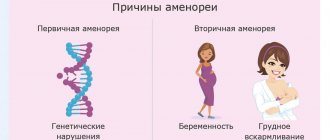Asphyxia of newborns is a condition of newborns in which, due to disruption of the breathing process, oxygen deficiency develops. There are two types of asphyxia: primary, which occurs at the time of birth, and secondary, which develops in the first days after birth.
Causes of newborn asphyxia
Of course, asphyxia will not occur in a newborn baby without any significant reasons. As a rule, the causes of asphyxia are either acute or chronic intrauterine hypoxia. In addition, the cause of asphyxia may be:
- Birth intracranial trauma of a newborn.
- Immunological incompatibility of mother and fetus.
- Blockage of the respiratory tract of a newborn baby - complete or partial, either by amniotic fluid or mucus.
- Fetal malformations that cause difficulty breathing.
In addition to problems with the health of a newborn child, asphyxia can also be caused by such problems as the presence of extragenital diseases of pregnant women. For example, such as:
- Diseases of the cardiovascular system, especially those in the acute stage.
- Severe iron deficiency anemia, especially in the last trimester of pregnancy.
- Diabetes mellitus, especially the insulin-dependent form.
- Late toxicosis is gestosis, accompanied by swelling of the legs and high blood pressure.
Very often, the pathological course of pregnancy also leads to asphyxia of newborns. Pathology of the structure of the umbilical cord, placenta and membranes, premature placental abruption, premature rupture of amniotic fluid and a long anhydrous period are all increased risk factors.
Also, very often, asphyxia of newborns occurs if there are any anomalies of labor, improper insertion of the fetal head, a pathologically narrow pelvis of the woman in labor, etc.
The causes of secondary asphyxia can be such health problems in the child as congenital pneumonia, cerebrovascular accidents, vomit entering the respiratory tract, and some types of disruption of the central system of the newborn child.
Factors that contribute to asphyxia
Mother's condition:
- age of primigravida 35 years
- chronic kidney disease
- diabetes
- hypertonic disease
- late gestosis
- anemia (Hb <100 g/l)
- polyhydramnios
- multiple pregnancy
- placenta previa
- isoimmunization by Rh factor and ABO system
- placental abruption, as well as associated bleeding before labor
- use of drugs, tranquilizers, psychotropic drugs and barbiturates
- alcohol intoxication
- inflammatory genital diseases during pregnancy
- infectious diseases during pregnancy, especially in the third trimester.
Conditions of birth:
- long labor
- premature rupture of membranes
- breech presentation
- fetal position anomalies
- drop in maternal blood pressure
- poor circulation in the umbilical cord (when it is pressed, entwined, or short)
- vacuum extraction of the fetus
- obstetric forceps
- use intravenously 1 hour or intramuscularly 2 hours before birth of sedatives and analgesics.
Fetal condition:
- aborted fetus
- respiratory and metabolic acidosis
- intrauterine growth restriction
- immaturity of the surfactant system of the lungs
- heart rhythm disorder
- passage of meconium into amniotic fluid
- post-term fetus
- fetal deformities.
Pathogenesis. The development is based on hemodynamic disturbances in the fetus, which arise due to disorders of the uteroplacental circulation. Due to hypoxia in the fetus, the functional state of the brain stem changes, promoting premature deep breaths with aspiration of amniotic fluid. Thus, with increasing acidosis, the respiratory center is depressed, and with prolonged asphyxia, the damage to nerve cells by hypoxia quickly worsens.
What happens during asphyxia?
What happens in the body of a newborn baby at the time of asphyxia? Regardless of what exactly caused the asphyxia, the child begins to immediately change metabolic processes, blood microcirculation and hemodynamics. How strongly these changes will be expressed depends on the duration of asphyxia and the degree of its intensity.
During acute hypoxia, the child's total blood volume increases significantly. This occurs due to the fact that the volume of red blood cells circulating in the blood increases. In the event that acute asphyxia develops against the background of chronic fetal hypoxia preceding it, hypovolemia develops. Hypovolemia is a change in blood consistency: it thickens, its viscosity increases, and red blood cells and platelets acquire increased aggregation ability.
In the internal vital organs of a newborn child - in the liver, in the kidneys and adrenal glands, in the heart and brain - swelling and hemorrhages that occur as a result of tissue hypoxia can be detected. Due to a decrease in peripheral and central hemodynamics, the number of heartbeats decreases and blood pressure drops. Due to disruption of the normal course of the metabolic process, the urinary function of the kidneys is impaired.
Diagnostics
When making a diagnosis: “Asphyxia of a newborn,” data from the obstetric history, how the birth proceeded, the child’s Apgar assessment at the first and fifth minutes, and clinical and laboratory tests are taken into account.
Determination of laboratory parameters:
- pH level, pO2, pCO2 (test of blood obtained from the umbilical vein);
- definition of base deficiency;
- level of urea and creatinine, diuresis per minute and per day (function of the urinary system);
- level of electrolytes, acid-base status, blood glucose;
- level of ALT, AST, bilirubin and blood clotting factors (liver function).
Additional methods:
- assessment of the functioning of the cardiovascular system (ECG, blood pressure control, pulse, chest x-ray);
- assessment of neurological status and brain (neurosonography, encephalography, CT and NMR).
Signs of newborn asphyxia
The most important sign of asphyxia in a newborn child is a violation of the respiratory process, which leads to a change in the rhythm of cardiac activity, as well as a pathological change in the functioning of the nervous system: impaired neuromuscular conduction and extinction of reflexes. In the very first seconds after birth, neonatologists carefully examine the child and assess his condition. The child’s condition is assessed using a special Apgar scale:
- Mild form of asphyxia
In the event that asphyxia is not pronounced, and the child’s body has not suffered much, the assessment of the child’s condition on the Apgar scale will be 6 – 7 points. A child born with a mild form of asphyxia takes his first breath within the first minute after birth. However, despite this, the baby’s breathing is weakened, there is a decrease in muscle tone and cyanosis (blue discoloration) of the nasolabial triangle.
- Moderate severity of asphyxia
In the same case, if the baby is diagnosed with an average degree of hypoxia, the score will be 4–5 points. If a child was born with moderate asphyxia, he will also take his first breath within a minute after birth, but breathing is greatly weakened and may be irregular, and the baby’s cry is very weakened.
The baby may also experience tachycardia, bradycardia, decreased muscle tone and all reflexes. The skin of the hands and feet, as well as the face, has a pronounced bluish tint. The umbilical cord of such a baby is characterized by intense pulsation.
- Severe form of hypoxia
With a pronounced form of asphyxia, doctors assess the child’s condition at 1 – 3 points.
In severe asphyxia, breathing is irregular (individual breaths) or absent, the child does not scream, sometimes groans, the heartbeat is slow, in some cases replaced by single irregular heart contractions, muscle hypotonia or atony is observed, there are no reflexes, the skin is pale as a result of spasm of peripheral vessels, the umbilical cord is not pulsates; Adrenal insufficiency often develops.
- Clinical death
If the overall Apgar score is 0, the child is in a state of clinical death. In this case, in order to save the child’s life, resuscitators immediately begin a set of resuscitation measures.
Consequences
Asphyxia of newborns rarely goes away without consequences. To one degree or another, the lack of oxygen in a child during and after childbirth affects all vital organs and systems. Particularly dangerous is severe asphyxia, which always occurs with multiple organ failure. The baby's life prognosis depends on the Apgar score. If the score increases in the fifth minute of life, the prognosis for the child is favorable. In addition, the severity and frequency of consequences depend on the adequacy and timeliness of resuscitation measures and further therapy, as well as on the severity of asphyxia.
Frequency of complications after hypoxic encephalopathy:
- in case of I degree of encephalopathy after hypoxia/asphyxia of newborns - the child’s development does not differ from the development of a healthy newborn;
- with stage II hypoxic encephalopathy – 25–30% of children subsequently have neurological disorders;
- with stage III hypoxic encephalopathy, half of the children die during the first week of life, and the rest, 75–100%, develop severe neurological complications with convulsions and increased muscle tone (later mental retardation).
After suffering asphyxia during childbirth, the consequences can be early and late.
Early complications
Early complications are said to occur when they appear during the first 24 hours of the baby’s life and, in fact, are manifestations of a difficult course of labor:
- cerebral edema;
- cerebral hemorrhages;
- convulsions;
- increased intracranial pressure and hand tremors (first small, then large);
- attacks of apnea (stopping breathing);
- meconium aspiration syndrome and, as a result, the formation of atelectasis;
- transient pulmonary hypertension;
- due to the development of hypovolemic shock and blood thickening, the formation of polycythemic syndrome (a large number of red blood cells);
- thrombosis (blood clotting disorder, decreased vascular tone);
- hypoglycemia;
- heart rhythm disorders, development of posthypoxic cardiopathy;
- disorders of the urinary system (oliguria, renal vascular thrombosis, swelling of the renal interstitium);
- gastrointestinal disorders (enterocolitis and intestinal paresis, digestive tract dysfunction).
Late complications
Late complications are diagnosed after three days of the child’s life and later. Late complications can be of infectious and neurological origin. The neurological consequences that appeared as a result of cerebral hypoxia and posthypoxic encephalopathy include:
- Hyperexcitability syndrome
The child has signs of increased excitability, pronounced reflexes (hyperreflexia), dilated pupils, and tachycardia. There are no convulsions.
- Reduced excitability syndrome
Reflexes are poorly expressed, the child is lethargic and adynamic, muscle tone is reduced, dilated pupils, a tendency to lethargy, there is a symptom of “doll” eyes, breathing periodically slows down and stops (bradypnea, alternating with apnea), rare pulse, weak sucking reflex.
- Convulsive syndrome
Characterized by tonic (tension and rigidity of the muscles of the body and limbs) and clonic (rhythmic contractions in the form of twitching of individual muscles of the arms and legs, face and eyes) convulsions. Opercular paroxysms also appear in the form of grimaces, gaze spasms, attacks of unmotivated sucking, chewing and tongue protruding, and floating eyeballs. Possible attacks of cyanosis with apnea, rare pulse, increased salivation and sudden pallor.
- Hypertensive-hydrocephalic syndrome
The child throws back his head, the fontanelles bulge, the cranial sutures diverge, the head circumference increases, constant convulsive readiness, loss of function of the cranial nerves (strabismus and nystagmus are noted, smoothness of the nasolabial folds, etc.).
- Syndrome of vegetative-visceral disorders
Characterized by vomiting and constant regurgitation, disorders of intestinal motor function (constipation and diarrhea), marbling of the skin (spasm of blood vessels), bradycardia and rare breathing.
- Movement disorder syndrome
Residual neurological disorders (paresis and paralysis, muscle dystonia) are characteristic.
- Subarachnoid hemorrhage
- Intraventricular hemorrhages and hemorrhages around the ventricles.
Possible infectious complications (due to weakened immunity after multiple organ failure):
- development of pneumonia;
- damage to the dura mater (meningitis);
- development of sepsis;
- intestinal infection (necrotizing colitis).
Treatment of acute asphyxia of newborns
Strictly speaking, all children, without exception, born in a state of asphyxia require immediate intensive care. How effective all medical procedures will be depends on how quickly after birth they began. All intensive care activities begin immediately after the birth of the child, right in the delivery room.
During resuscitation measures, the child’s condition is continuously monitored by all the basic parameters of his body’s vital functions:
- Heart rate.
- Hematocrit
- Respiratory frequency and depth.
Based on these indications, doctors have the opportunity to monitor the effectiveness of their actions and, if necessary, adjust them.
Immediately after the fetal head is born, the doctor inserts a soft probe into the newborn’s mouth and nose and, using electric suction, removes all the contents of the upper respiratory tract: residual amniotic fluid, mucus. After this, the child’s umbilical cord is cut, and the baby is placed on a special resuscitation table, under the rays of a special lamp. After this, repeated aspiration of the contents of the nasopharynx, as well as the contents of the stomach, is performed.
After the child’s cardiac and respiratory activity is restored and his condition is stabilized, the baby will be transferred to the intensive care unit. All further medical measures will be aimed at preventing or eliminating existing cerebral edema, normalizing metabolic processes, restoring kidney function and hemodynamics.
Rules for caring for a child who has suffered asphyxia
In order for the child to recover from the effects of asphyxia as quickly as possible, it is very important to provide him with proper medical care. The child should be completely at rest, and his head should be in an elevated position. Intensive oxygen therapy for all babies without exception who have suffered asphyxia is very important.
Children born with a mild form of asphyxia are placed in a special oxygen tent. This tent is a kind of dome, inside of which there is a high oxygen content. The child spends there from several hours to several days, depending on his state of health.
In the same case, if the child has suffered moderate or severe asphyxia, he should be placed in an incubator. Oxygen is supplied to the incubator; its concentration inside should be approximately 40%. In the same case, if for some reason the maternity hospital does not have the necessary equipment, oxygen can be supplied through a special nasal cannula or through a breathing mask.
Very often, a newborn baby needs repeated suctioning of the contents, usually mucus, from the baby’s upper respiratory tract. Careful monitoring of indicators such as bowel function, diuresis, and body temperature is also necessary.
The first feeding of a child who has suffered mild to moderate asphyxia is performed approximately 16 hours after birth. Those children who were born in a state of severe asphyxia are fed for the first time after 24 hours, using a special tube. But the question is about that. When a baby can begin to be put to the breast is decided individually in each case, depending on the child’s condition.
After discharge from the maternity hospital
After the baby is discharged home, he should be under medical supervision of specialists such as a pediatrician and a neurologist. This is necessary in order to prevent possible complications from the central nervous system.
The subsequent prognosis depends on several factors, in particular on the severity of asphyxia, the timeliness of the start of treatment measures and their adequacy. In the event that a child was born with primary asphyxia, the prognosis depends on the secondary assessment of the condition on the Apgar scale (performed 5 minutes after birth). If the second score is higher than the first, then the prognosis for the child’s life is quite favorable.
If a child is born in a state of asphyxia, such complications may occur during the first years of life. Asphyxia of newborns, consequences:
- Hyper and hypoexcitability.
- Hydrocephalic syndrome.
- Convulsive syndrome.
- Diencephalic disorders.
They occur especially often if there has been severe asphyxia of newborns. It is in order to reduce the risk of developing such complications and start treatment in a timely manner that clinical observation by specialists of the relevant profiles is necessary.









